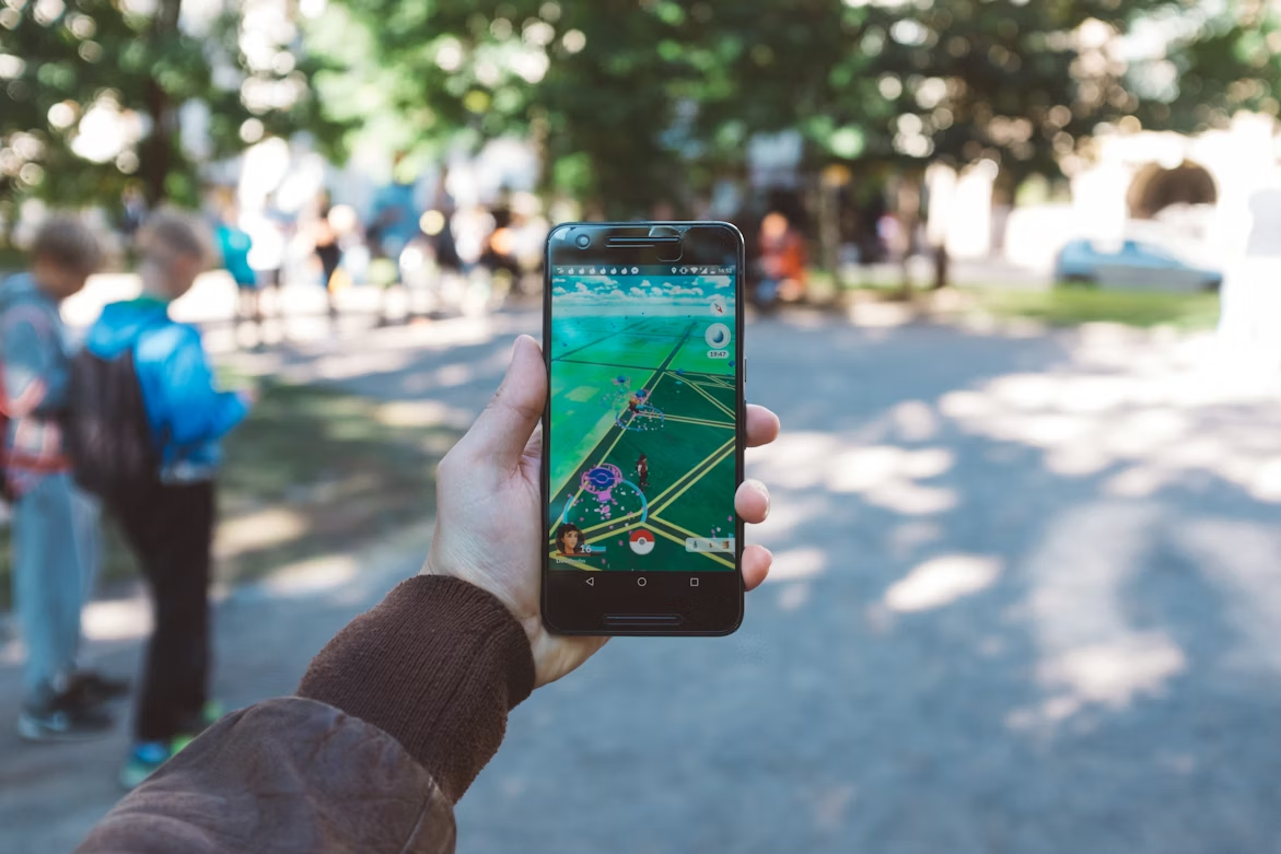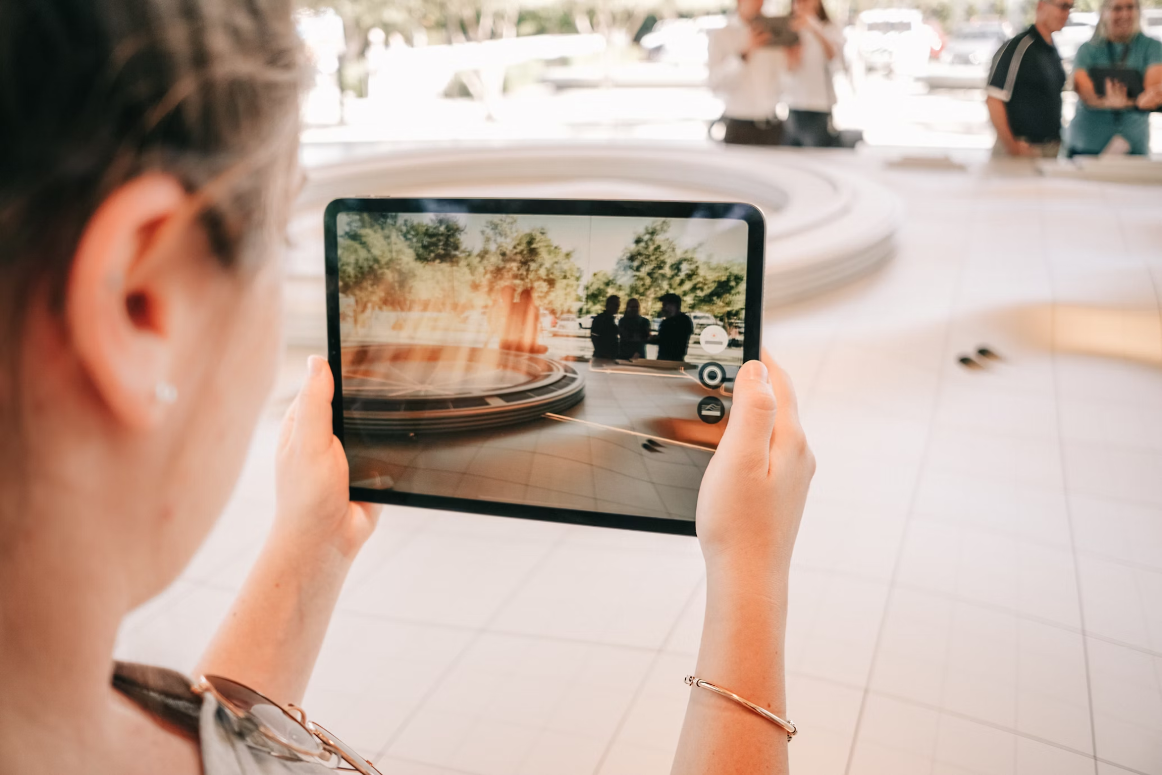An augmented reality (AR) is a technology that projects a digital object or information onto the real one, usually using a phone camera or a pair of special glasses. In contrast to virtual reality, where users are immersed in an entirely digital environment, AR is constructed upon the pre-existing surroundings. Initially, it was primarily associated with games and basic applications, although it has now shifted to tools of everyday use. People now rely upon it in communication, shopping, training, health, and even navigation. AR has quietly become part of ordinary routines in ways many do not notice.

AR in Online Games and Entertainment
The concept of augmented reality gained popularity with the help of mobile applications like Pokémon GO, in which computerized figures could be seen in physical areas and locations. This showed how games could merge with everyday surroundings. Since then, AR has been explored in different genres, including casino-style formats. Popular slots like sweetbonanza.com are often mentioned when imagining how AR might transform familiar games. Instead of only spinning reels on a screen, players could see 3D symbols projected into their room, adding a new dimension to gameplay. Betting platforms also experiment with AR by projecting live odds or match data directly into a user’s view.
Beyond traditional games, AR is shaping larger entertainment events. E-sports organizers use overlays to display player statistics and replays during tournaments. Concerts and live-streamed shows test interactive visuals that respond to audience input, creating layers of information and spectacle. These examples show why entertainment continues to be a key driver for AR adoption, as it introduces new technology to wide audiences in a familiar and accessible way.
Digital Layers in Everyday Communication
Over the past few years, communication has transformed quickly, and augmented reality is no exception. It introduces additional digital aspects to tools that people already use, making their interaction more visual and interactive. What began as fun filters has become a way of living as most people relate, share, and express themselves online. Common uses include:
- Filters and avatars that change the look or form of digital characters.
- AR-guided video conference, translation, interactive backgrounds, or 3D shared objects.
- Stickers, effects, and location-based information, all of which are tools of social media.
These aspects extend past entertainment. Avatars and filters shape how individuals represent themselves, whereas live translations assist in breaking the language barrier. Location-based AR uses local events, directions, or services as a part of a conversation. Collectively, these technologies are transforming daily communication by combining text, voice, and graphics into a single linked layer.
Practical Use of AR in Learning and Jobs
Schools, universities, and companies are implementing augmented reality as a practical tool instead of a trial. The studies indicate that approximately 70% of educators utilizing AR report better student engagement, and 3D models simplify grasping difficult subjects. It is also used in hospitals, engineering sites, and technical schools, where it is used to train, and the step-by-step overlays are used to show how things are done and minimize errors. According to industry surveys, error rates may be reduced by up to 40% with AR applied in onboarding or safety programs. This is also advantageous to remote teams, as the same model or design can be accessed using digital technology and modified in various places simultaneously.

AR in Consumer Life
Augmented reality is no longer restricted to online entertainment or offices. It now serves everyday habits in shops, hospitals, and training areas, providing individuals with new options for performing everyday chores. Main areas of use include:
- Retail with virtual try-ons for clothes, accessories, and home furniture placement
- Healthcare where overlays assist surgeons, therapists, and diagnostic procedures
- Wellness apps guiding posture, rehabilitation, and exercise routines
- Sports and fitness with AR glasses showing live statistics, training overlays, navigation tools, and accessibility support
It has been reported that virtual try-on tools may reduce product returns by 30%, and AR-assisted surgeries at the hospitals have been associated with reduced procedure errors. The use of fitness applications is on the increase due to the availability of devices with AR capabilities. These instances demonstrate how technology, initially regarded as an experimental one, has become part of daily decision-making regarding shopping, health, and exercise.
Difficulties, Ethics, and Prospective
Not every member of society can access augmented reality equally. Few devices use it, and the internet speed or hardware is often expensive, depending on the region. This renders adoption disproportionate and slows development in most sectors. Privacy is another key issue. AR systems gather sensitive information about location, movement, and surroundings. The information may be disclosed or abused without any form of strong protection.
The ethical aspect is questionable, too. AR can direct individuals in convenient directions, yet it can shape decisions, particularly in shopping and entertainment. It is imperative to come up with a reasonable balance between support and manipulation. In the future, more extensive use is likely to take place as the devices will become cheaper and accessible. One of the most important parts will be the regulation that will establish the guidelines on data protection and responsible use.
Final Outlook
AR has evolved to become a niche tool and has found its way into a high number of spheres of daily life. It is applied in internet games, interaction, classes, healthcare, shopping, and fitness. Individuals use it to study subjects that are complicated, drive without accidents, health information, and make superior shopping decisions. The number of adoptions is also increasing because the devices become more advanced and additional services incorporate AR capabilities. The challenge ahead is not the technology, but the management of privacy, cost, and fair use in robust governance.




